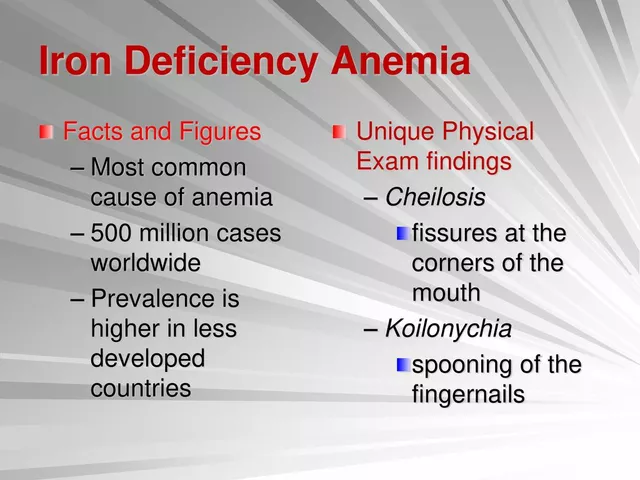Ever stood in the middle of a crowded pharmacy aisle, scanning boxes of ovulation tests with a lump in your throat, secretly wondering if your body is broken? Here’s a hard truth: an estimated 1 in 10 women deals with anovulation at some point. So if you’ve got questions about your cycles, your symptoms, or what’s happening behind the hormonal curtain, you’re definitely not the odd one out. There’s no need to tiptoe around the topic or bury worries under a mountain of confusing advice. Let’s break down what’s really happening, look at honest options, and give you straightforward steps that’ll help you feel a whole lot less lost.
Why Ovulation Doesn’t Always Happen: Causes of Anovulation
If you’ve been tracking your period or using ovulation strips for months and results are as unpredictable as a toddler with a crayon, you’re probably wondering what causes anovulation in the first place. Hormones are the main puppet masters here. The process of ovulation relies on a delicate dance involving the hypothalamus, pituitary gland, and your ovaries themselves. When just one step in this routine wobbles, your body might skip ovulation—sometimes for a month, sometimes for longer stretches.
One of the most common culprits is polycystic ovary syndrome (PCOS), responsible for up to 80% of anovulatory cycles. PCOS causes hormonal chaos—think higher androgens (male hormones), disrupted LH and FSH levels (the hormones that tell your ovaries when to act), and more. Another big cause is stress. When you’re wrestling with work deadlines, life drama, or any sort of emotional tsunami, your body ramps up cortisol. That same stress hormone can throw your ovulation game completely off. Rapid weight loss or super low body fat can also silence hormones needed for ovulation. It’s like your body is shouting, "Hey, things are too uncertain for babies right now!"
Thyroid issues are sneakier contributors than most people realize. Both hyperthyroidism and hypothyroidism can disrupt the hormonal feedback systems that keep the ovulation cycle running smoothly. Age is another factor: As you approach your late 30s and early 40s, it’s normal for your cycles to become more erratic, but some women experience anovulation even earlier (perimenopause can start as early as your mid-30s, by the way). Don’t forget lifestyle habits, too. Over-exercising, extreme dieting, medications (like some antipsychotics), or even a change in sleep patterns can all play a part.
Sometimes doctors see unexplained cases—everything "looks normal" but ovulation still won’t cooperate. It’s frustrating, but it’s real. A 2022 review found that 15–20% of anovulation cases remain unexplained despite bloodwork and imaging. Genetics may also play a background role, but that’s a puzzle researchers are still working on. If you’re charting your symptoms, it can help if you keep a dedicated journal or app to track any changes and clues.
Anovulation Symptoms: Spotting the Signs (Even If Your Period Still Shows Up)
Picture this: You have regular periods, but a home ovulation kit insists you’re never peaking. Or you’ve noticed patches of breakouts, wild mood swings, or you just don’t feel the mid-cycle energy high anymore. Many people think missing periods is the only sign of trouble, but anovulation is sneakier than that. Plenty of women with anovulatory cycles still bleed monthly. This is called "anovulatory bleeding"—a bleed without a released egg. It isn't a true period, but it can fool just about anyone (including well-meaning doctors, honestly).
Besides irregular or absent periods, you might notice that your cycles jump around—with stretches as short as 21 days or as long as 60 days. Your cervical mucus—the clear, slippery discharge that usually appears right before ovulation—may be totally absent or different than usual. If you’re used to a spike in libido, breast tenderness, or even a dull twinge of pain (mittelschmerz) mid-cycle, missing these signs is another clue.
Hormonal acne, unexplained weight changes, or more hair growth (think chin or chest) can also be tipoffs, especially if PCOS is at play. Here’s a quick table that compares common symptoms of normal ovulation and anovulation to help you make sense of the chaos:
| Symptom | Typical Ovulation | Anovulation |
|---|---|---|
| Cycle Regularity | 21-35 days, predictable | Highly variable; unpredictable |
| Mid-Cycle Discharge | Clear, stretchy cervical mucus | Little or absent |
| Basal Body Temperature | Noticeable increase after ovulation | No clear shift |
| Period Bleeding | Consistent duration & flow | Light, heavy, or missed altogether |
| Ovulation Pain | Mid-cycle twinge possible | Rare or missing |
If you’re constantly asking yourself, "Is this normal?"—that’s reason enough to bring it up with your doctor. Even if you’re nowhere near thinking about kids, untreated anovulation can increase your risk of other health problems, like heart disease or endometrial thickening over time. For anyone feeling like they’re "imagining things," don’t discount your gut instinct. Tracking basal body temperature, using LH strips, and being honest about physical or emotional changes can give you a fuller picture and help your healthcare provider dig deeper.

Medical Diagnosis: Testing and Understanding Hormonal Imbalance
Getting answers means moving beyond WebMD rabbit holes and Instagram wellness threads. If you suspect anovulation, a real diagnosis usually starts with a detailed health chat at your doctor’s office. Be ready to talk openly about your cycles, symptoms, medical history, and stress. The next step is usually bloodwork—checking hormone levels like estradiol, FSH, LH, prolactin, and thyroid hormones. Sometimes doctors check for testosterone and DHEA-S too, especially if they suspect PCOS or another endocrine problem.
Your healthcare provider might want you to track your basal body temperature for a few months. A classic ovulatory cycle produces a post-ovulation temp rise (by at least 0.5 degrees Fahrenheit, or about 0.3 Celsius). If this pattern never shows, it’s a red flag. Ultrasound imaging isn’t just for spotting babies—it’s also a great tool for seeing if ovaries look polycystic or if the uterine lining is thicker than normal. In more stubborn or unclear cases, doctors might suggest special tests like an endometrial biopsy or advanced hormone testing, though these are less common.
Figuring out "why" is only half the battle. PCOS? There are very specific hormone and ultrasound criteria. Thyroid problems? Lab numbers will tell you what’s off. If everything else checks out, stress and lifestyle factors might be the invisible roots. Here’s a fact more people should know: Around 30% of women with anovulatory cycles are otherwise healthy and experience no clear symptoms at first. The trick is not to leave things up to chance. If your period has disappeared for three months or is unpredictable for six months, push for a thorough review, not just a quick prescription to "get your period back." Your future self will thank you.
Want a smart tip? Bring printed cycle charts or screenshots to your doctor. The detail saves you time and can really speed up the diagnosis. If you’re newly off birth control, be aware that it can take months for natural ovulation patterns to bounce back. Holding tight is tough, I know, but patience can sometimes be just as valuable as a prescription pad.
Treatment and Fertility Options: From Hormones to Hope
The whole topic of fertility treatments can make even the strongest coffee taste weak. After my own endless cycles of asking, waiting, and peeing on sticks, what I wanted was someone to break it down honestly. If you’re longing for pregnancy, the first step is always tackling the cause. Working with your doctor, sometimes even a small change—like gaining or losing a few pounds, or easing back on HIIT workouts—can nudge your hormones enough to restore ovulation.
If you’ve got PCOS, treatments might include drugs like clomiphene citrate or letrozole to stimulate ovulation. Letrozole has actually shown slightly better pregnancy rates for women with PCOS (yes, studies back that up). For thyroid or prolactin problems, doctors usually adjust medication to bring levels within normal. In some cases, treating underlying conditions kick-starts normal cycles again. If nothing else works, injectable gonadotropins—hormone shots—are another route, but these need careful monitoring to prevent side effects, like ovarian hyperstimulation. Some people go straight for assisted reproductive technology like in vitro fertilization (IVF) if other steps don’t lead anywhere. The wild part? About 30-40% of IVF cycles are done because of ovulatory disorders.
But what if you can’t—or choose not to—go down the big-treatment path? Regular lifestyle tweaks can make a difference: Sleep, stress relief, and eating patterns matter way more than most realize. Think Mediterranean-style diets, gentle movement (like yoga or walking), and actual rest. Supplements like inositol, vitamin D, and omega-3s pop up in research with modest but real benefits for cycle regularity. If you’re still not sure whether pregnancy is possible with anovulation? You might want to check this thorough guide on anovulation and pregnancy—it walks through cases, odds, and the real-life science for anyone feeling lost.
Remember, you don’t have to pretend your feelings about fertility are no big deal. When Lucas and I were hitting wall after wall, it felt like the universe’s cruelest trick. Support groups (even just an online chat at 2 a.m.) and seeing a therapist who gets this stuff can be an anchor. Massage therapy, acupuncture, or simply taking a break from the expectation grind—consider them, too. Relief sometimes looks different than you imagine. And if you’re done with tests and just want a plan, there are clinics that specialize only in "complex cases"—don’t be afraid to shop around. Your path is yours, messy bits and all.
Bottom line? Whatever your symptoms, your timeline, and your big hopes, you deserve answers that make sense to you. Keep asking, tracking, advocating, and trusting that even when things are complicated, you’re not broken. You’re just on a different cycle than you planned—but you’re definitely not alone.








Brenda Taylor July 17, 2025
omg finally a post that gets it right on anovulation like seriously it's often glossed over or made super complicated but this breaks it down in a way that feels real not just textbook yawn
i especially like how it talks about spotting symptoms because honestly sometimes you just don't know if your irregular cycles are normal or a red flag
but the best part is the fertility treatments info it’s like wow there actually are options and strategies not just waiting and hoping ugh
tho i wish it included more about lifestyle stuff maybe exercise or diet i feel that’s huge too but this def a solid start
also lol i might have skimmed a bit but does it say when to call the doc? very useful for those too afraid to bother specialists
virginia sancho July 20, 2025
Hey everyone! I just wanted to add that from my experience as a coach working with clients facing hormonal issues, it's really crucial to not self-diagnose based on symptoms alone.
Early consultation with a healthcare provider can really speed up getting the right tests and treatments, especially for something like anovulation.
Also, I noticed this article touched on hormonal imbalances, which is great! Sometimes simple blood tests can reveal a lot more than what you expect.
And on fertility treatments, it’s not always invasive - sometimes meds that stimulate ovulation are prescribed, which many find manageable.
Honestly, it’s about being informed and proactive, not scared. I hope more folks find this article helpful :)
Namit Kumar July 22, 2025
I find it quite commendable that this article mentions a 'real-world approach' because in my opinion, a lot of medical literature often ignores the practical day-to-day struggles that patients face.
In India, for example, fertility issues remain highly stigmatized, so I feel such clear articles in English help to educate and break barriers.
However, I would be interested to know whether the fertility treatment options discussed factor in accessibility and cost, which remain major hurdles.
Are there low-cost treatments mentioned or government programs supporting anovulation-related fertility care? Would make a big difference to many.
:) Great initiative though!
Sam Rail July 26, 2025
Hey, skimmed through and found it pretty clear but honestly, I think they could have done a better job explaining the differences between anovulation and other menstrual irregularities.
Lots of people confuse things like luteal phase defects with anovulation and it can lead to unnecessary panic.
I liked how they gave practical tips though - makes it less scary.
Would love to see a section on how lifestyle stress really messes with ovulation because nobody talks about that enough and stress is a huge factor.
What do you guys think about that?
Taryn Thompson July 29, 2025
This post is a commendable resource for anyone navigating the complexities of reproductive health, especially concerning anovulation.
The clarity provided here is refreshing, particularly on the causes and when to seek medical assistance.
From a clinical perspective, early intervention enhances the prospects of successful conception, and this guide rightly emphasizes that.
Moreover, the up-to-date fertility treatments section offers hope, underscoring advances in medical science.
For individuals facing these challenges, it is vital to remain informed and consult healthcare professionals promptly.
Overall, a well-articulated and balanced article.
Lisa Lower August 1, 2025
Okay have to say this is the kind of stuff that gets me fired up! Anovulation seems like this big shadow lurking around so many women’s lives but not talked about enough yea?
I mean, the hormonal imbalances? Wow, so many don’t realize how deeply those can affect your whole body and mood and yup, fertility too.
Seriously wish everyone struggling had access to info this clear and practical, no flowery nonsense just straight-up strategies to actually try.
And calling out when to seek help? Huge! Too many folks wait way too long thinking it’s just ‘part of being a woman’ which is nonsense.
This article is like a motivational nudge to get proactive and take control—that’s powerful.
Dana Sellers August 4, 2025
Okay so I have to point out the elephant in the room here — why do we put so much pressure on women around fertility issues like anovulation? Feels like society expects miracles and then judges the struggle harshly.
Yeah the article helps with info but honestly, the emotional weight of this is overwhelming for many and not just a medical puzzle.
People need to chill on the stigma and stop acting like anovulation is some failure of womanhood.
Also—where’s the compassion in these clinical explanations? We need more heart, not just cold facts.
Sorry not sorry but that’s my take. This info is good but nowhere near enough focus on how people feel dealing with this trapped feeling.
Damon Farnham August 8, 2025
The article tries very hard to be comprehensive but I suspect it glosses over some important traditional perspectives that can also contribute to understanding and treating anovulation.
Modern medicine has its merits, but sometimes overlooking longstanding cultural therapies is a mistake.
Also, it is essential to maintain a critical eye about fertility treatments being marketed heavily nowadays — not all are as effective or safe as presented.
The balance between embracing advanced medicine and respecting classical wisdom should be highlighted more.
Furthermore, there is a sociopolitical dimension to reproductive health that goes unmentioned but deserves debate.
Marsha Saminathan August 11, 2025
Whoa this article hits some powerful notes! Anovulation is such an underrated topic considering how many women silently face it.
The part about spotting symptoms caught my eye mainly because so often those signs get ignored or written off as quirks.
Reading about the fertility treatments sparked real hope because it’s like, yeah, there’s life beyond the struggle and science is on your side.
It also reminds me how important it is to keep evolving in how we talk about reproductive health openly and creatively.
Honestly, articles like this can be a game changer in breaking down myths and encouraging people to take action, so thanks for sharing!
Kavita Jadhav August 14, 2025
I really appreciate the empathetic tone of the article even though it’s very clinical in some parts.
For many women in India and elsewhere, anovulation is something they quietly suffer with while juggling social expectations and limited access to care.
It’s essential that articles like this also highlight emotional support and community resources as part of treatment paths.
One thing I’ve noticed is how empowering knowledge can be, and this guide definitely helps with that.
Would love if future articles also cover integrative approaches combining medical and holistic practices gently and with respect.
Alexia Rozendo August 16, 2025
haha yeah sure, because apparently women’s bodies are just a never-ending mystery to be solved only by expensive treatments right? lol
But seriously, this article actually looks like it might help someone not lost in a sea of medical jargon for once — go figure.
I do wonder if the fertility treatments mentioned always work or if it’s just sugar-coated optimism like those ads promise.
And does anyone else find it funny how we’re always encouraged to seek medical help but it’s never clear exactly when it’s urgent or just normal?
anyway good read but still think the whole system needs a major rewrite